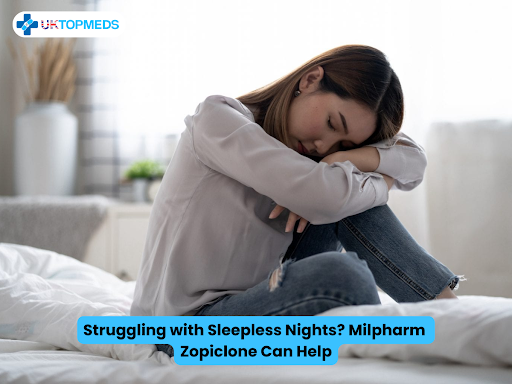Most people are born with upper eyelid creases, known as double eyelids. However, some, especially those of Asian descent, lack double eyelids. Double eyelid surgery can help create a crease on your upper eyelid, giving you a natural fold. Double eyelid surgery has many names, including Asian blepharoplasty or Asian eyelid surgery.
Here’s everything you need to know about the procedure, including what it involves, its benefits, candidacy, preparation, recovery, and results.
What Is Double Eyelid Surgery/Asian Eyelid Surgery?
Asian eyelid surgery is a cosmetic procedure that creates an eyelid crease. People undergo the surgery to have larger, more symmetrical eyes. The procedure can also result in bright, defined, almond-shaped eyes and a more aesthetic face. Double eyelids refer to the natural crease/fold in the eyelid just above the upper lashes. About 50% of the Asian population (China, Mongolia, Taiwan, Korea, Japan, Vietnamese, Thailand, Malaysia, Indonesia, and Myanmar) don’t have this eyelid crease. As such, they make the bulk of the candidates for the procedure, hence the name Asian eyelid surgery.
Candidates of the North Eastern descent often prefer smaller eyelid heights, while those from the South East fancy taller eyelids. However, the surgery and crease are customized to the client’s needs, preferences, and anatomy. Double eyelid surgeries may also involve the removal of fat and excess eyelid skin to achieve the desired results. Sometimes, the surgery is combined with epicanthoplasty, which involves medially extending the inner corner of your eye toward your nose. The two procedures can be used to increase the width and height of your eyes to enhance your natural appearance.
How Is Double Eyelid Surgery Performed?
Cosmetic/plastic surgeons perform the Asian blepharoplasty procedure. Like most surgeries, the interaction begins with an initial appointment/consultation where the surgeon examines your eyelids and anatomy. They’ll also discuss your needs and the techniques used for Asian eyelid surgery.
Plastic surgeons use two main approaches to complete Asian eyelid surgery: incisional and non-incisional. Full-incision techniques involve an incision through the full length of the eyelid crease. The surgeon will then remove excess fat/skin and use sutures to mimic natural fibrous attachments.
Surgeons can also perform partial-incision double eyelid surgery. This involves a short incision along the upper border of the eyelid crease. Because the incision is shorter, it results in a smaller access point and more difficult operation. Sutures are removed four to six days after surgery. Non-incisional surgery doesn’t involve incisions, which means no scarring and minimal to no swelling. Instead of an incision, the surgeon will create tiny holes in the eyelid and pass sutures through them. The sutures are hidden beneath the skin and don’t need removal. However, the creases can unfold in the future.
Who Is the Right Candidate for Asian Eyelid Surgery?
You can consider Asian eyelid surgery if you don’t have a natural crease on your upper eyelid. Candidates for the surgery should be in good physical health.
Here are the top characteristics of potential candidates for the double eyelid surgery:
- Non-existent natural eyelid folds or uneven folds
- A fatigued expression caused by weak eye-opening muscles
- Eyelids that drape over the iris or have an unsatisfying shape
- Excessive inner eyelid skin or eyelids with excess fat and puffiness
- Inward-folding eyelids that cause the eyelashes to brush against the cornea
- Eyelids interfering with your vision
What’s Recovery for Double Eyelid Surgery Like?
Recovery after the surgery varies depending on the procedure taken and patient-specific aspects. The initial healing for incisional surgeries takes one to two weeks to recover, while non-incisional procedures only require two to three days. However, full-incision double eyelid surgery can take several months to heal fully. Non-incisional procedures should be fully healed after two weeks.
Here’s what the recovery looks like:
- You’ll experience minimal pain after the surgery
- The swelling will vary depending on the trauma incurred by the surgery
- The bruising should be gone within two weeks
- You should be ready to return to work after one week
- You can resume driving after one to two weeks
- Gradually resume exercise two to four weeks after the procedure
Temporary post-surgery symptoms include bleeding, bruising, swelling, skin sensations, dry eyes, minimal pain, and light sensitivity. These symptoms resolve on their own, but your surgeon can recommend cold compress, lubricating ointment, sunglasses, and medications. Follow all instructions given by your surgeon.
FAQs About Asian Double Eyelid Surgery
Is Asian eyelid surgery safe?
Yes. Double eyelid surgery is safe and effective when performed by an experienced cosmetic surgeon specializing in facial plastic surgery. Follow all pre- and post-surgery instructions and contact your surgeon for any questions.
Does double eyelid surgery leave scars?
Non-incisional Asian eyelid surgery doesn’t leave any scars. However, full and partial incision surgeries will leave tiny scars that fade over time. The scarring is minimal because the sutures mimic the natural fibrous appearance of double eyelids.
How much does Asian eyelid surgery cost?
There’s no ballpark pricing for double eyelid surgeries. Each procedure is different because of the many patient-specific aspects. Incisional surgeries cost more than non-incisional surgeries, but some cases are covered by insurance, so you can save more.
How long does it take to heal completely?
Non-incisional double eyelid surgeries should be healed completely two weeks after the procedure. Incisional surgeries can take several months to heal completely. However, you should be able to resume normal activity within two to four weeks.
Which double eyelid surgery should I choose?
Choose full-incision surgery if you have excess skin and fat. Partial-incision surgeries are great if you don’t have excess skin but have some fat. You can also use it for more durable results than non-incisional surgery. Choose non-incisional surgery if you want a temporary solution.



